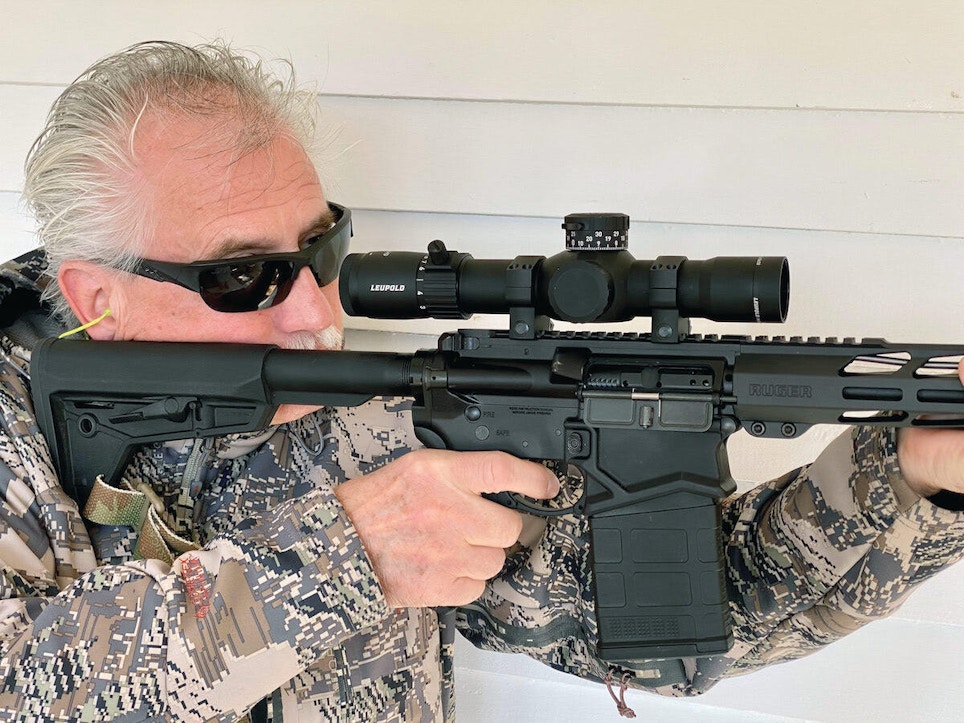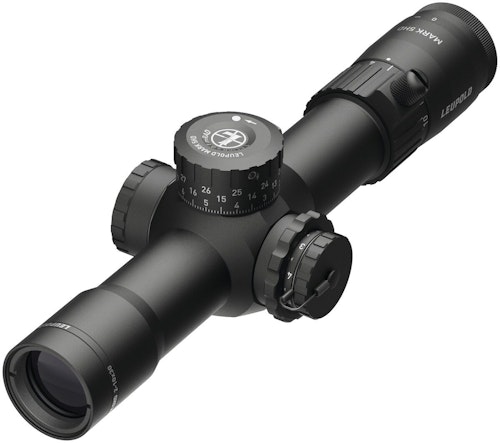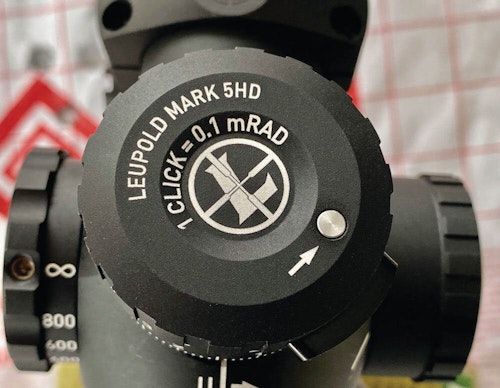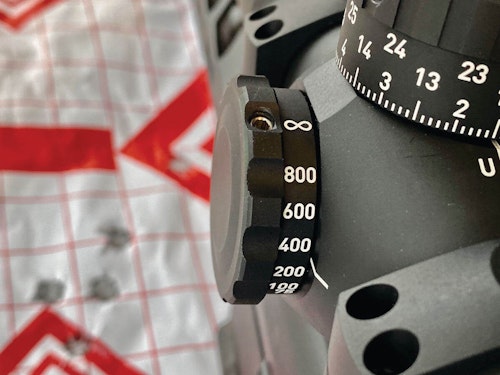Another shift is occurring in the world of shooting glass, and Leupold & Stevens is on the cutting edge of the movement yet again.
Leupold’s new Mark 5HD 2-10x30 riflescope is a crossover scope in a couple different ways. First, unlike the 1-4 and 1-6 variable scopes currently so popular, this compact scope kicks up the magnification all the way to 10x in a unit essentially the same size and weight as the lower magnification options. At the same time, and bucking another scope trend, the 10x recognizes that a skilled shooter can go long distances accurately without needing 16x, 24x or even more capability.
Second, while the Mark 5HD 2-10x30 was built with the tactical market in mind, the scope’s ruggedness, compact nature and magnification will all work great for hunters, too. This will be especially true for the Mark 5HD model which features an MOA reticle (see below).
This new addition to Leupold’s Mark 5HD line is just 11-inches long and weighs 24 ounces. Three Mark 5HD 2-10 models were available at launch, all first focal plane optics: one with a TMR reticle and milliradian adjustments; another with an illuminated TMR reticle and milliradian adjustments; and last, a PR1-MOA reticle model featuring MOA adjustments, which will likely garner some hunter interest.
Designed, machined and assembled in the USA, the Mark 5HD 2-10 is also covered by Leupold’s full lifetime guarantee. As the Leupold website explains, “If at any time your Leupold riflescope, mounts, red dot, binocular, or spotting scope doesn’t perform, we will repair or replace it for free — whether you're the original owner or not. You don’t need proof of ownership or a warranty card, and there’s no time limit.”
For my testing and evaluation, I received a new Mark 5HD 2-10 FFP with Leupold’s Tactical Milling Reticle or TMR. The TMR is Leupold’s redesign of the MIL reticle and employs hash marks instead of dots for increased ranging and holdover precision. The TMR provides aiming points for both wind and bullet drop compensation, too. The hash marks are spaced 0.5 MIL apart, transitioning to 0.2 MIL spacing on the outer edges.
The Mark 5HD 2-10’s elevation turret provided 30 MILs of adjustment in 0.1 MIL increments, and Leupold’s patented ZeroLock set screw ensured the elevation dial would not move when knocked around.
Leupold designed the Mark 5HD 2-10 as an optic that would pair well with carbines and designated marksman rifles, so I mounted my Mark 5HD onto Ruger’s new SFAR.
Chambered in .308 Win, the SFAR is essentially an AR-10 built into a frame the size of an AR-15. At first glance, most people would assume the SFAR was an AR-15, given the near identical length and weight of the rifle. I reviewed the rifle in the March 2023 issue of Shooting Sports Retailer and had used it at the range and on various hunts. I knew the rifle was very accurate and nimble.
Leupold sent me two sets of 35mm Mark 4 rings for the scope, and I used the High (aluminum) matte set, which fit right onto the SFAR’s top rail.
Note: For the retailer offering this scope, make sure you have a good selection of these rings on hand. Sturdy and rugged, they’ll generate extra sales because they are also among the few rings that will fit the Mark 5HD’s 35mm main tube.
At my outdoor shooting range, I first zeroed the Mark 5HD and SFAR at 50 yards, and then moved onto a 100-yard lane to see what the rifle and scope could do. Quite a lot, it turned out.
I ran the Mark 5HD-equipped SFAR with three different brands of .308 Win. Ammunition. All pegged three-shot groups of an inch or less. The different ammunition brands shifted point of impact anywhere from an inch or so to several inches from the previous zero but the Mark 5HD controls quickly got me back onto the bullseye.
Images seen through the Mark 5HD 2-10 were crisp and sharp-edged, and colors popped bright and clear. Most of my shooting was done in very sunny conditions and the lens coating reduced what might otherwise be troubling glare to nearly zero. Light transmission was excellent.
It was time to “shoot the box,” the standard control test with the first shot fired at the bullseye; subsequent shots are still aimed for the bullseye, but with the optic’s Elevation and Windage controls first adjusted, the points of impact should shift accordingly.
For a scope like the Mark 5HD built with milliradian adjustments, this means that each full MIL turn of either control should result in a bullet impacting approximately 3.6-inches from the previous spot.
For this test I used Remington Premier Match .308 Win, firing a 168-grain boat-tailed hollow point bullet. Shooting took place in the early afternoon, in full sun and the thermometer at 81 degrees. A 5 mph breeze pushed in steadily from my left to right.
The change in ammo required a bit of re-zeroing as the first rounds hit a couple inches high and left of the bullseye. Once that was accomplished, I shot at a clean target: simply a good-sized square of white paper with a Birchwood Casey Target Spot affixed to the left bottom corner. The radiant orange Target Spot measured 3 inches in diameter and featured a black diamond bullseye.
My first shot hit an inch to the right of the diamond bullseye. I figured that was on me so I gave the scope’s Windage control a full MIL turn to the right, and fired, aiming for that first shot. The shot moved over nicely, but was low, so I fired again. Still low. But the shots had moved right, 3.4- and 3.9-inches respectively, as later measured.
Remember, a full MIL is 3.6 inches.
Next, I adjusted the Elevation a full MIL up, and fired, and that shot hit 4.0-inches up from the previous shot. I spun the Windage a full MIL to the left and that shot hit 4.4-inches to the left.
I adjusted the Elevation down a full MIL, which should have put me right back at my original zero. I aimed this shot right at the top of the diamond and that’s almost exactly where the bullet hit.
Pretty impressive. When I factored in the outside shooting, off bags, and the shooter himself, I knew the Mark 5HD’s controls were extremely precise.
The only thing I would change on the scope? The Windage zeroing line on the tube. Angling in as it did and wider than the adjustment lines on the knob, it was often difficult to determine exactly which 1/10th of a MIL line the knob was set upon.
Selling the Mark 5
So, a visitor to your establishment sees the Mark 5HD 2-10 on display atop your counter and asks, “What’s up with this new scope?”
Staff may well respond with these key points and features that make the Mark 5HD a standout:
- The 2-10 model is the latest addition to Leupold’s award-winning Mark 5HD family, a family of scopes recognized for its accuracy, precision and optical performance.
- The unit itself is lightweight yet rugged, the images clear and sharp.
- The HD 2-10 has all the same features of the larger, heavier Mark 5HD’s but in a shorter, lighter package that's ideal for carbines, "Recce” rifles and designated marksman rifles.
- The 35mm main tube is made of very durable but lightweight aluminum.
- The controls feature Leupold’s Three-Turn ZeroLock adjustments.
- Like the rest of the Mark 5HD line, this model is backed by the Leupold Lifetime Guarantee.
- And, the Mark 5HD is proudly designed, machined and assembled in the U.S.A. at Leupold’s Beaverton, Oregon, factory.
Any Authorized Leupold Retailer can reach out to their local Leupold territory manager for in-store assets including brochures, DVDs, counter mats and display hardware. That territory manager will also assist with in-store training of sales staff and can explain the various Leupold sales incentive programs available to authorized retailers.
The Leupold & Stevens website also contains a large amount of information that sales staff can access, including videos showing various features and uses for Leupold optics, plus a digital catalogue.
The Leupold marketing team has generated substantial coverage of the Mark 5HD 2-10 in many key media outlets, as well as with a good number of content creators and influencers.
So don’t be surprised if customers come in eager to see if you have this new scope on hand.









